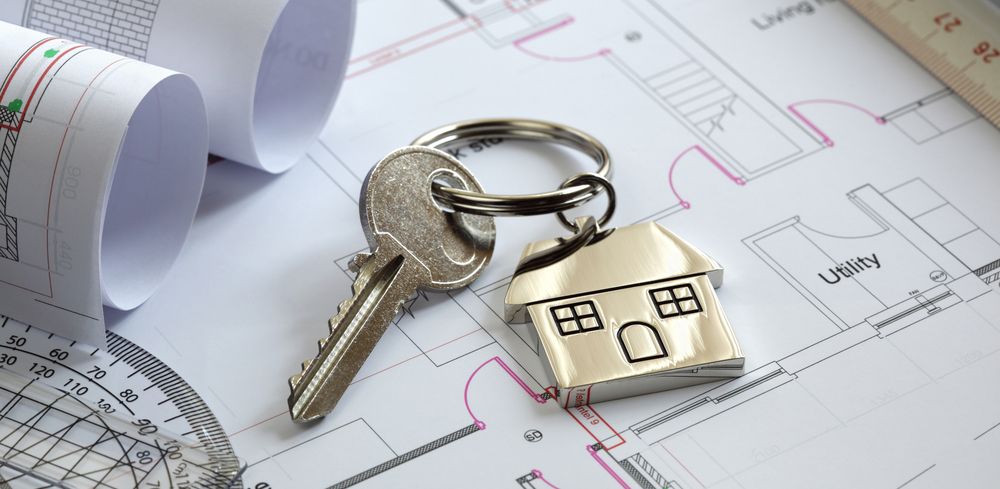In today's construction industry, efficient project handovers can make or break a company's reputation and bottom line. Despite their critical importance, 85% of construction projects experience handover delays, creating ripple effects throughout the entire project lifecycle. These delays aren't just inconvenient, they're expensive.
The industry currently faces over $88 billion in rework costs annually due to poor handover processes and documentation management.
As project complexity increases, construction firms are discovering that transitioning from traditional paper-based methods to digital strategies is essential for survival and competitive advantage in an increasingly technology-driven marketplace.
The Evolution of Construction Project Handovers
Project handovers have transformed dramatically over the past decade, evolving from manual paper processes to sophisticated digital systems. Paper-based documentation has long been the industry standard, but the limitations are increasingly apparent.
Physical documents are prone to damage, loss, and deterioration, creating significant risks for project teams. Finding specific information within thousands of paper documents can take hours or even days, dramatically reducing productivity.
Information silos represent another major obstacle in traditional handovers. When critical data is scattered across different departments or contractors, creating a project record becomes nearly impossible. This fragmentation leads to approximately 14% error-related rework, translating to millions in unnecessary costs.
Time delays are perhaps the most visible symptom of outdated handover processes. Manual compilation, organization, and verification of project documentation can extend handover timelines by weeks or even months, delaying facility operation and revenue generation.
Core Components of an Effective Digital Handover Strategy
Creating a successful digital handover system requires several integrated elements working in harmony. Each component addresses specific challenges while contributing to the overall goal of seamless information transfer.
Centralized Data Management Systems
Common Data Environments (CDEs) provide the infrastructure for unified project information. These platforms serve as a single source of truth, allowing all stakeholders to access, update, and verify documentation throughout the project lifecycle.
Integrating construction closeout software into these environments ensures that handover preparation begins on day one, rather than being a rushed afterthought.
Building Information Modeling (BIM) serves as the foundation for many digital handover strategies. By creating detailed 3D models with embedded data, BIM provides a comprehensive view of all project elements. This integration is crucial for benefits of digital strategy in construction, including improved accuracy and reduced conflicts.
Version control and audit trails protect data integrity by tracking every change and revision. This transparency eliminates confusion about which document version is current and who made specific modifications, reducing disputes and improving accountability.
Advanced Documentation Technologies
Digital asset documentation transforms physical assets into searchable, accessible information resources. By tagging building components with digital identifiers, facility managers can instantly access specifications, maintenance schedules, and warranty information.
3D visualization tools enable intuitive navigation of complex building systems. Rather than flipping through endless equipment manuals, facility teams can interact with visual representations that provide immediate context and understanding.
Mobile capabilities extend documentation access beyond the office, allowing field teams to retrieve and update information in real-time. This immediate access to critical data enhances decision-making and reduces costly delays.
Quality Control and Verification Protocols
Automated compliance verification ensures that handover documentation meets all contractual, regulatory, and operational requirements. This systematic approach catches gaps and errors before they cause problems, improving overall project delivery.
Digital punch lists streamline the identification, assignment, and resolution of outstanding items. With real-time status tracking and automated notifications, nothing falls through the cracks during the critical final project phases.
Quality metrics provide objective measures for handover success, allowing continuous improvement through data-driven insights. These benchmarks help teams identify patterns and refine processes for future projects.
Transforming Project Handovers With AI and IoT
The integration of artificial intelligence and Internet of Things technologies is elevating project handover digital strategy to new levels of sophistication and effectiveness.
AI-Powered Handover Innovations
Machine learning algorithms now automate document classification, extracting key information from thousands of files without manual intervention. This capability dramatically reduces processing time while improving accuracy and consistency.
Natural Language Processing technologies enable systems to understand and process documentation content, identifying critical information and flagging potential issues. This intelligent analysis catches problems that human reviewers might miss.
Predictive maintenance scheduling uses historical data to optimize facility operations immediately after handover. By anticipating equipment needs based on performance patterns, AI helps prevent costly downtime and extends asset lifespans.
IoT and Digital Twin Integration
Sensor-based validation provides real-time confirmation that building systems perform as designed. This objective verification replaces subjective assessments, ensuring that owners receive fully functional facilities.
Digital twin technology creates virtual replicas of physical buildings that reflect current conditions and performance. These dynamic models provide unprecedented insights for facility management and future renovations.
Real-time monitoring enables immediate response to changing conditions and emerging issues. This continuous feedback loop helps maintain peak performance throughout the operational life of the facility.
The convergence of AI and IoT technologies is creating unprecedented opportunities for construction project management tools to deliver value long after traditional handover would be complete.
Measuring ROI of Digital Handover Strategies
Implementing digital transformation in construction requires investment, making ROI measurement essential for justifying and optimizing these initiatives.
Tangible Benefits Metrics
Time reduction represents one of the most significant benefits, with studies showing 40-60% decreases in handover duration. This acceleration translates directly to earlier facility operation and revenue generation.
Cost savings occur through multiple channels, including reduced rework, lower documentation expenses, and decreased labor requirements. These direct savings can be substantial, often covering implementation costs within the first few projects.
Resource optimization extends beyond the handover phase, improving facility maintenance and operations throughout the building lifecycle. The long-term value of these efficiencies often exceeds the initial productivity gains.
Long-term Strategic Advantages
Client satisfaction increases dramatically with smooth, comprehensive handovers. This improved experience leads to stronger relationships, positive referrals, and repeat business, all crucial for sustainable growth.
Competitive differentiation becomes increasingly important as digital adoption spreads. Firms that Develop sophisticated digital strategy in construction capabilities gain significant advantages in winning new projects and entering premium markets.
Risk mitigation represents perhaps the most valuable benefit, as digital documentation provides protection against disputes, compliance issues, and operational problems. This risk reduction translates to lower insurance costs and fewer legal challenges.
Moving Forward With Digital Handover
The transition to digital handover strategies represents one of the most significant opportunities for construction firms to improve project outcomes, client satisfaction, and long-term profitability. As technology continues to evolve, the gap between digital leaders and laggards will only widen.
For construction executives, the question isn't whether to implement digital handover strategies, it's how quickly they can transform their current processes to remain competitive. Those who embrace this change won't just survive in tomorrow's construction industry, they'll define it.
Expert Answers to Common Questions About Digital Handover
What Does the Digital Handover Process Involve?
Digital handover involves transferring all project information, from design documents and specifications to warranties and maintenance schedules, to owners in structured digital formats. This comprehensive approach ensures that facility managers have immediate access to everything needed for efficient operations.
What Elements Should a Handover Strategy Include?
An effective strategy should identify what documentation will be provided, specify formats and standards, establish verification procedures, and assign clear responsibilities. The strategy must also include training for facility personnel and ongoing support mechanisms during the transition period.
Why Is Project Handover So Critical?
Proper handover ensures all stakeholders have aligned expectations and clearly defined responsibilities. It provides the foundation for successful facility operation, prevents costly knowledge gaps, and establishes accountability throughout the project lifecycle. Without effective handover, even perfectly constructed buildings can fail to deliver their intended value.









